Ralph Dale Logerwell served two tours in the Navy during the Vietnam War.
Now 78, he can still clearly remember the planes overhead, the motors buzzing, as he stood below on the aircraft carrier.
From the war onward, the lack of sensation in his feet became a lifelong problem.
He went to many different hospitals and doctors over the years, always hunting for answers. He underwent numerous back surgeries.
“No one had a clear answer,” he said. “They called it idiopathic neuropathy, which I guess means they don’t know the cause.”
Then, in August 2019, he had a diagnostic lumbar puncture done to measure the pressure in his spinal fluid.
“I was numbed out during the procedure, but I did feel a sharp pain in my leg during the puncture,” Logerwell said. “I was able to walk out of the hospital shortly after the procedure, so I didn’t pay much attention to the pain.”
A few hours later, his symptoms worsened.
“An agonizing pain in both of my legs,” Logerwell recalled. “We had OnStar in our car, the communications system that you can call in an emergency, and my wife called an ambulance.”
When paramedics arrived, Logerwell asked them not to go to the hospital where he had the lumbar procedure.
He wanted to go to Spectrum Health Blodgett Hospital.
Troubling prospects
Doctors quickly admitted the Mecosta, Michigan, resident to Blodgett Hospital and ordered several MRIs and CTs.
The imaging results indicated an intrathecal hematoma, or blood in his spinal fluid. Emergency surgery was needed, even as his condition continued to deteriorate.
As Logerwell recovered from his six-hour surgery, his legs remained weak.
“I was told rehab for my legs would be a good idea,” he said.
He went to a facility for rehabilitation on Sept. 1, but when he developed a urinary tract infection and became fatigued, Logerwell was sent back to Blodgett Hospital on Sept. 19.
“I was totally out of it,” Logerwell said. “Scared the heck out of my family. I was in the intensive care unit and the people at Blodgett did a fantastic job. They had all these bags of antibiotics hooked up to me and they got rid of the infections.”
When Logerwell was infection-free, Blodgett Hospital nurses moved him out of the ICU on Sept. 21 and into a regular room on the third floor, where they could keep a close eye on him.
Even then, his legs refused to wake up.
So nurses moved him to a new location: the Inpatient Rehabilitation Center at Blodgett Hospital.
“Up one floor, to the fourth floor,” Logerwell said.
“That’s when Ralph Logerwell came into our care,” said Shastin Shull, MD, a physical medicine and rehabilitation physician with Spectrum Health.
“He wasn’t able to walk, had very little strength in his lower extremities,” Dr. Shull said. “He’d had a lumbar puncture done elsewhere, a diagnostic procedure to remove cerebrospinal fluid. And there had been a complication around the spine.”
Before he went to Blodgett Hospital, Logerwell and his wife, Barbara, had been told by doctors that he may never walk again.
He wasn’t having it.
He grew determined to beat the odds.
Dr. Shull assembled a team to help—nurses and a specialized group of physical, occupational and recreational therapists.
Linda Rusiecki, a Spectrum Health physical therapist and certified brain injury specialist, remembers meeting Logerwell for that first evaluation.
“He was a paraplegic at that point and devastated to think he might not walk again,” Rusiecki said. “This was a man who used to bring other elders to their medical appointments.”
Rusiecki developed an intensive care plan for Logerwell’s rehabilitation.
Part of it involved use of the Bioness L300 Go, high-tech electrical stimulation cuffs that are placed around the patient’s legs, sending electrical signals to the muscles to stimulate movement.
“The Bioness L300 Go is a high-tech functional electrical stimulation device designed to improve strength during gait in those with neurological disorders,” Rusiecki said. “One cuff goes around the thigh to stimulate the quadriceps or the hamstrings, while another goes around the lower leg to stimulate the muscles that lift the forefoot off the ground.”
While the device had been used previously on stroke patients, Logerwell became the first Spectrum Health patient to use the device in this way.
“Everyone in rehab was so encouraging,” Logerwell said. “They told me, sure, I would walk again.”
He spent two months in rehab, walking with the assistance of various walkers and equipment.
“I was making tremendous progress,” Logerwell said.
Defying the odds
Indeed, he was. Logerwell’s winning attitude soon returned. There was no stopping him.
“We also used a Rifton E-Pacer, an unweighted gait harness that fit between his legs and up around his chest,” Rusiecki said. “Dr. Shull told us to try these two pieces of equipment for a couple of weeks to see how well Ralph would respond and then go from there.
“And Ralph had incredible results,” she said. “After the first week, we stopped using Bioness on his right leg because it had recovered all of its strength. By week two, he was moving his left leg enough on his own that we discontinued it all together. By week three, we discontinued the Rifton E-Pacer. By the fourth week, he was walking independently with a walker.”
Back on his feet, Logerwell felt ready for more.
And recreational therapist Abby Neunke had plenty to offer.
“My part is to consider his leisure activities,” Neunke said. “I start by gauging Ralph’s interests and then help him to find adaptive ways to do what he loves. Our goal is to not only get our patients home, but out into the community again.”
When Neunke and Rusiecki learned Logerwell lives by a lake and loves swimming, they made arrangements to get him into the pool once a week at a nearby YMCA.
“The first time I was at the pool, they lowered my chair into the water,” Logerwell said. “The next time, I used my walker to walk into the water. The time after that, I walked in on my own, holding onto the side of the pool.”
He learned to exercise in the water—walk and march from one side of the pool to the other, the water buoying up his body.
He practiced going up and down a set of stairs underwater. He brought his pickle ball equipment into the pool, too, which allowed him to once again play a sport he loved.
On Oct. 25, he headed home.
If he could have walked all the way to Mecosta, he would have.
“I’m not a sit-around guy who plays bridge,” he said, chuckling. “I love to move around, I love to travel. Right now, I’m working toward walking with just a cane. That’s the next step.”

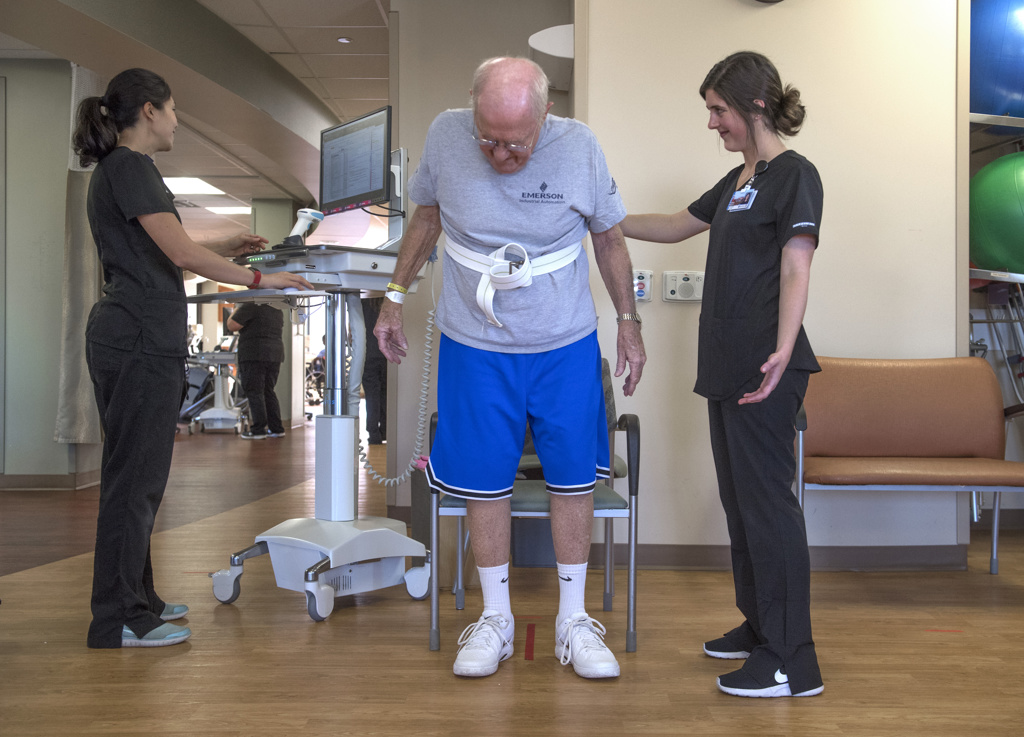
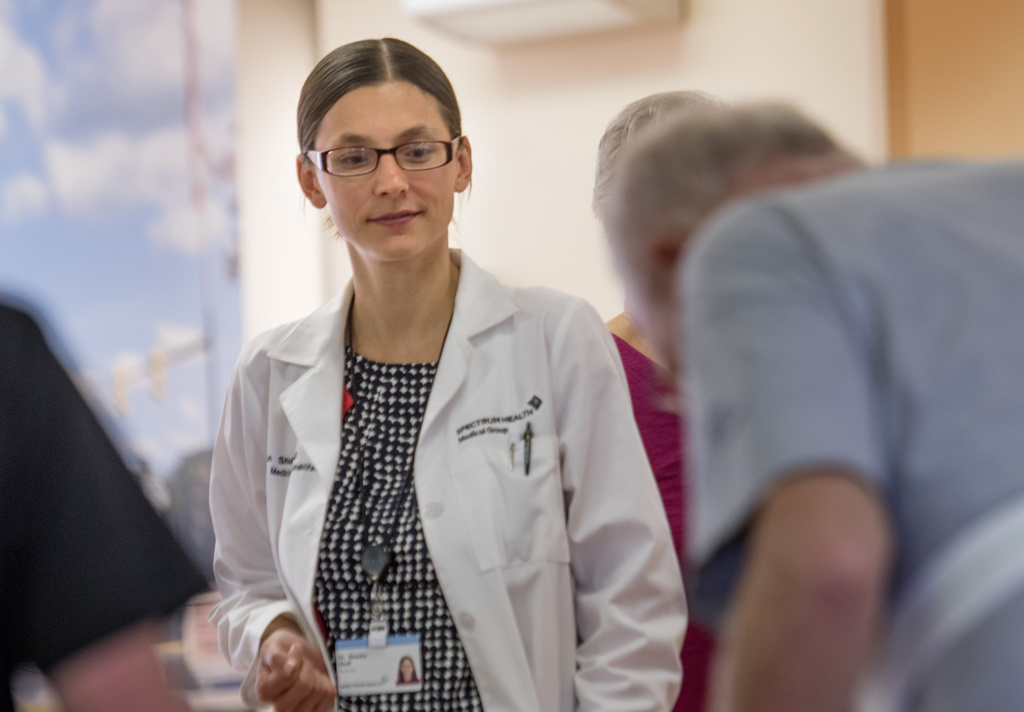


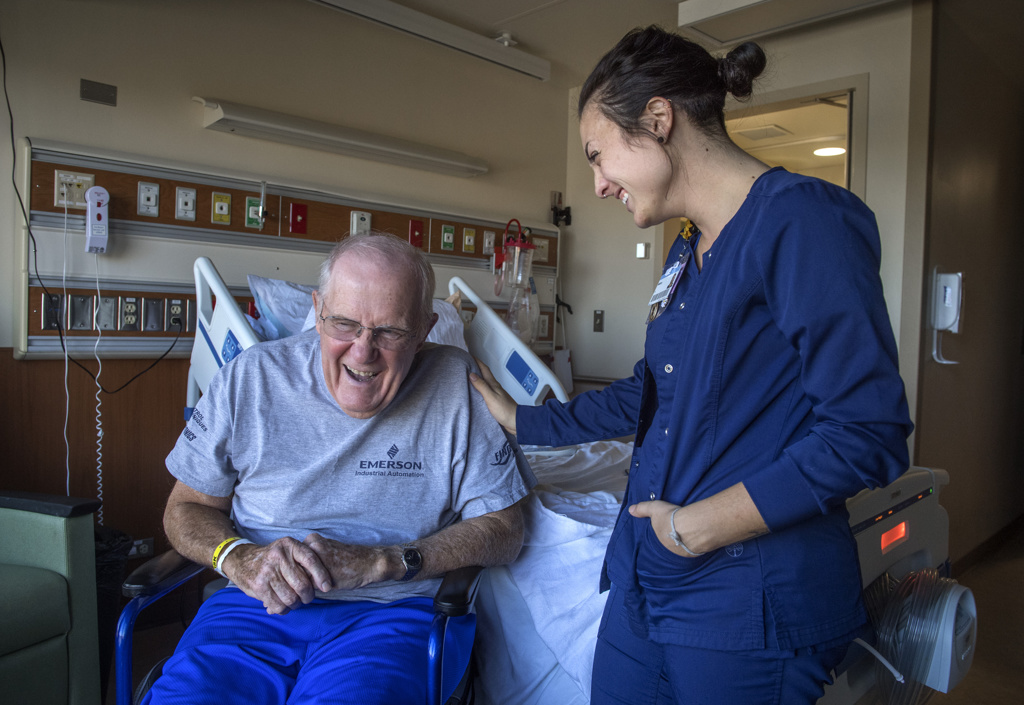
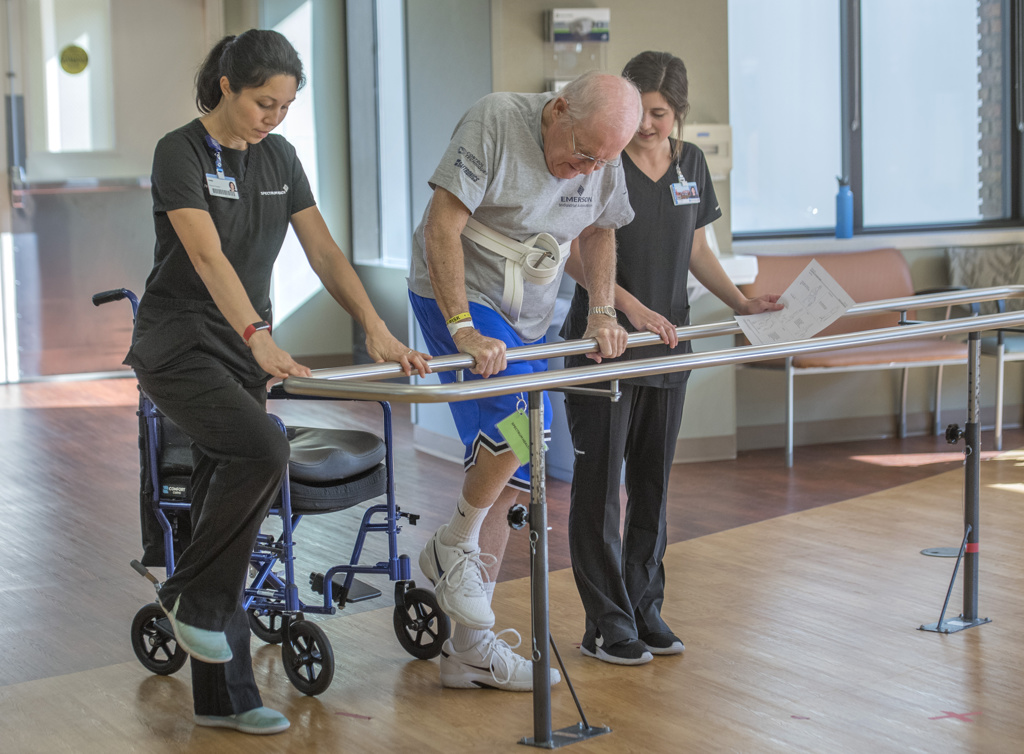
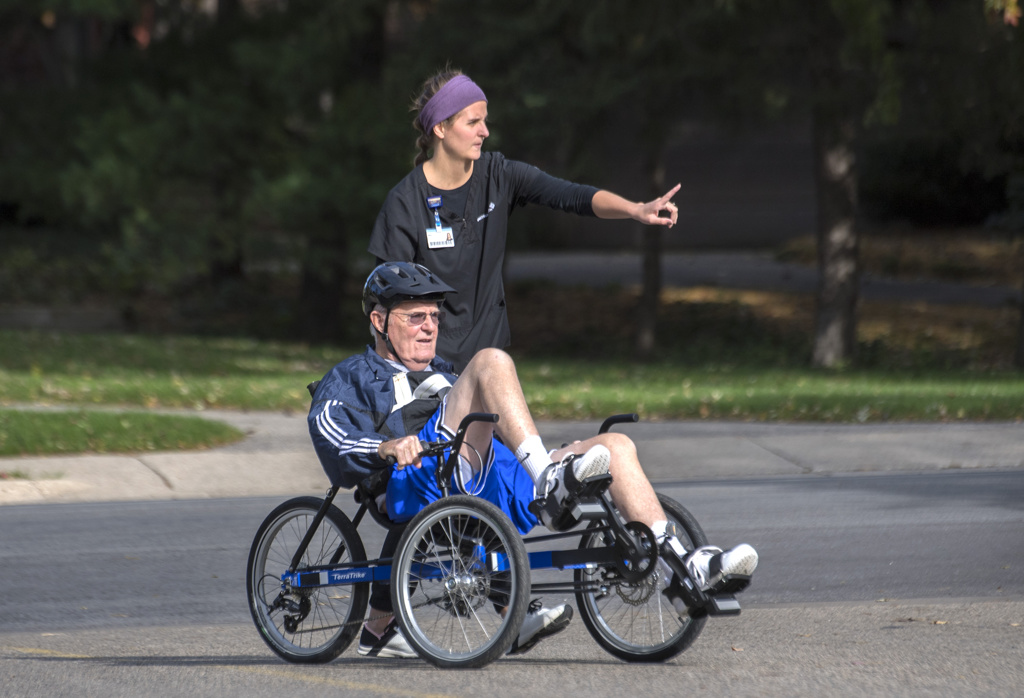
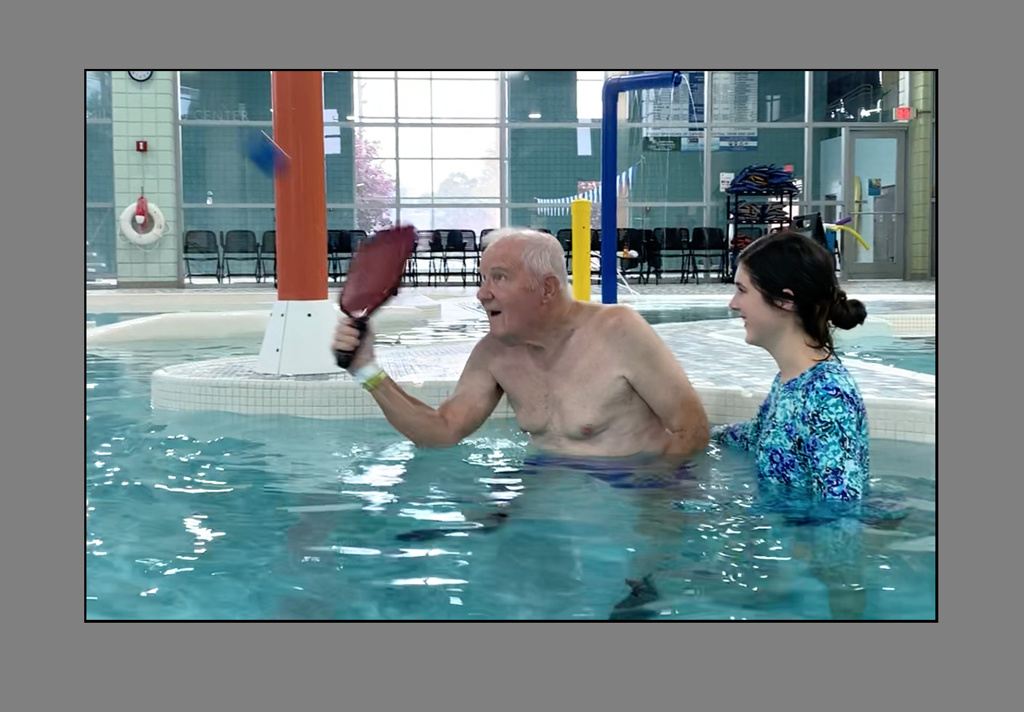


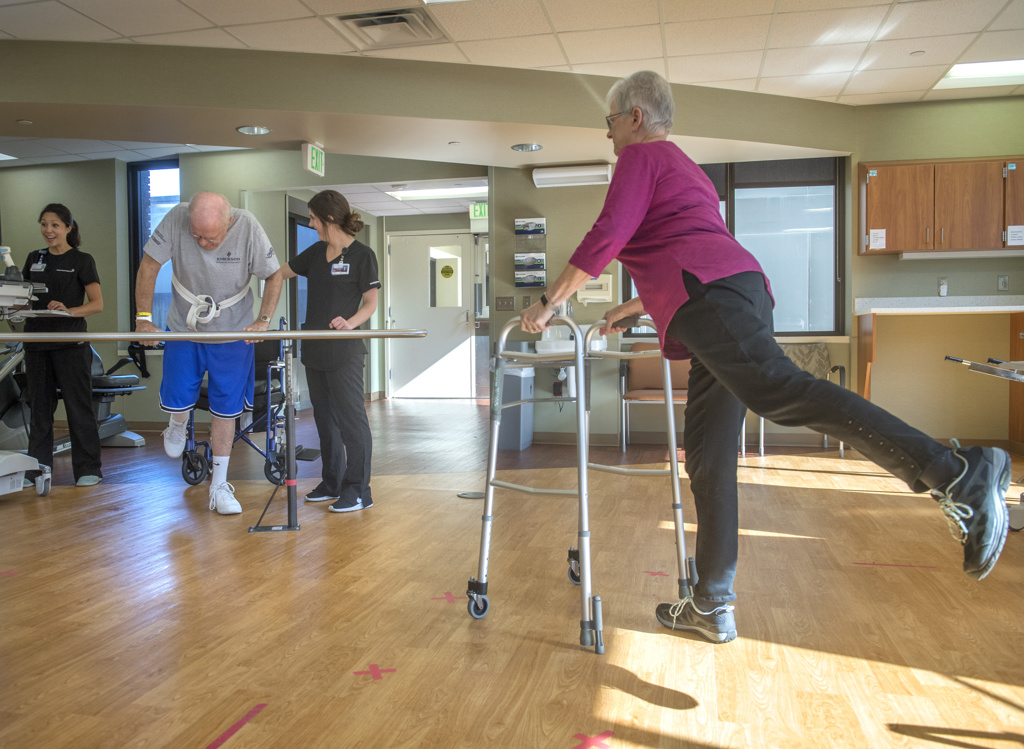
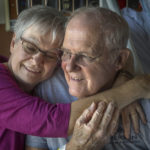
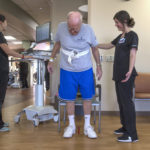

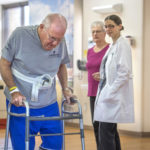

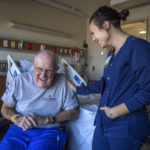
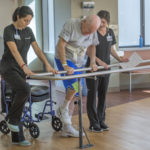





 /a>
/a>
 /a>
/a>
 /a>
/a>
Yay for the Blodgett rehab team! Cool to read about the gait trainers and aqua therapy. What great tools to get people on their feet again!